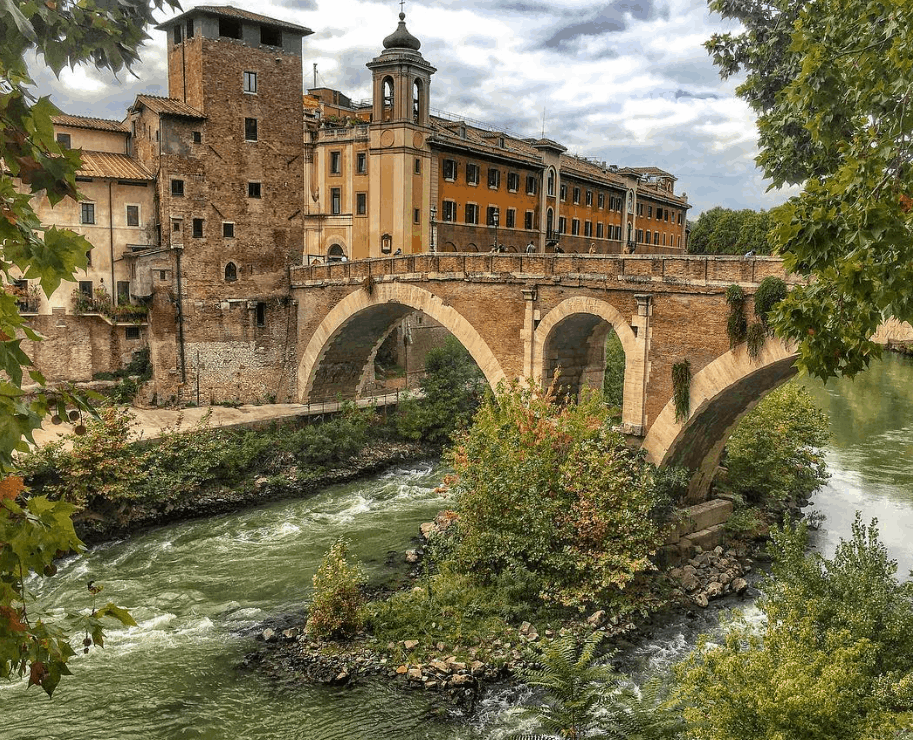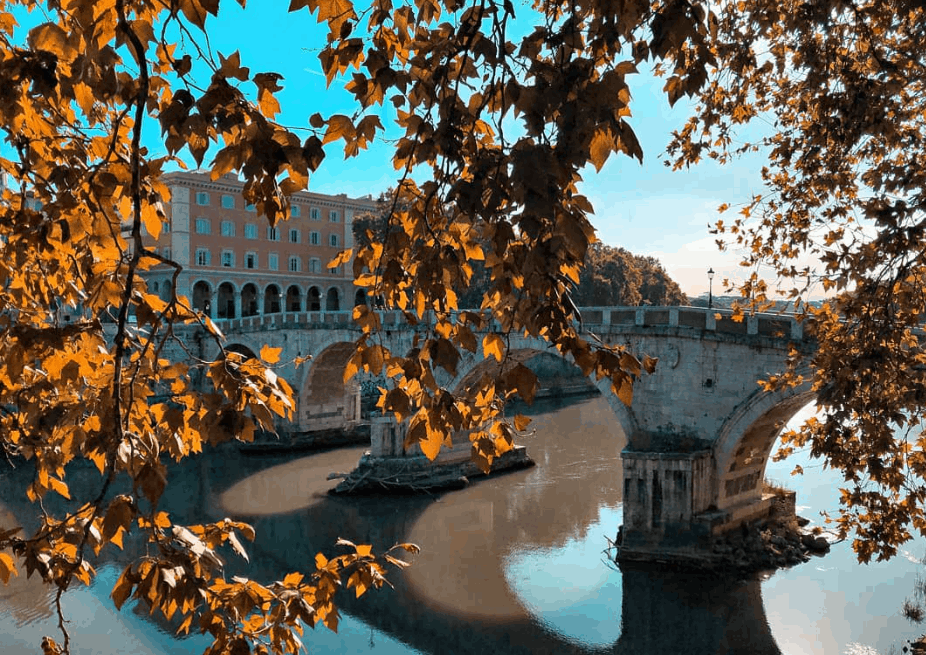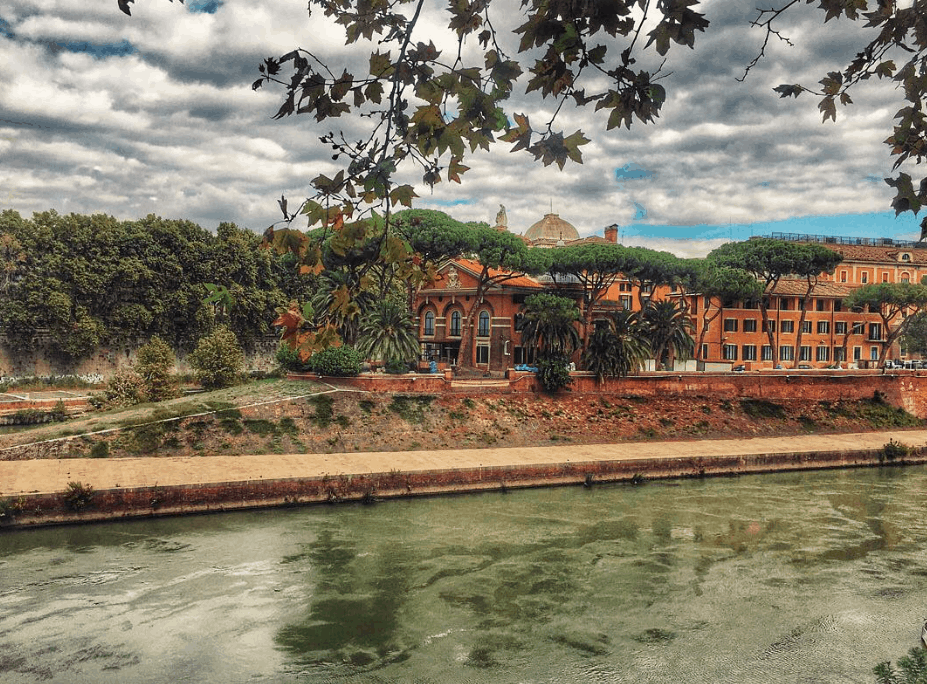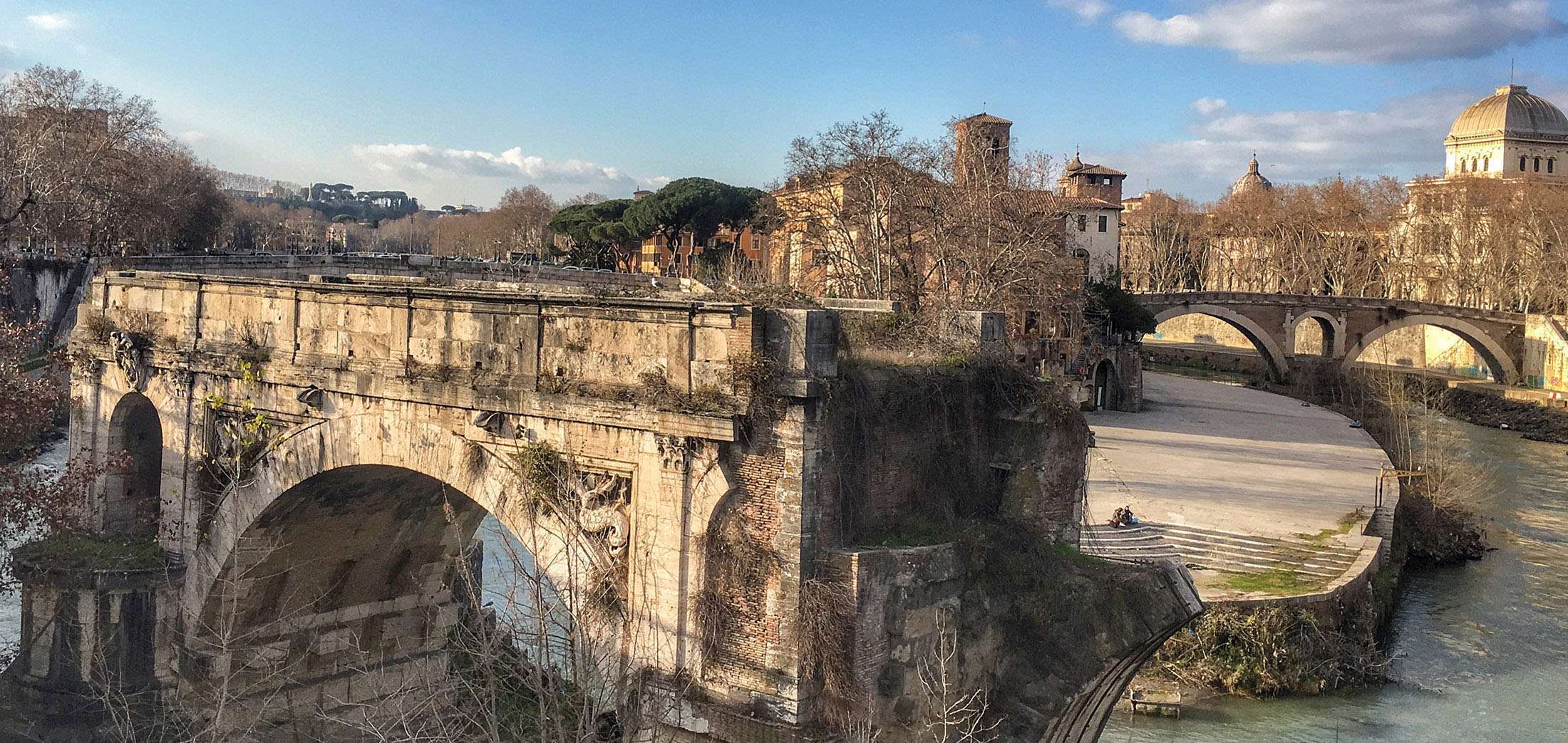
Discovering the Charm of Tiber Island: A Local’s Perspective: Walk from Piazza della Repubblica to Tiber Island
📌 Allotted Time: 3 hours
📍 Click here to open the walking map
Tiber Island, nestled in the heart of Rome, harbors centuries-old tales, architectural marvels, and a spirit of healing that has spanned millennia. This island, with its unique boat-like shape, has been a fixture of Roman history, embodying the city’s resilience and its enduring attraction. Though a visit could take you along various paths, a few highlights capture the essence of Tiber Island, each telling a part of its rich narrative. Let’s journey through these storied locales, providing a glimpse into the soul of this remarkable piece of Roman heritage.
The Historical Heartbeat
The origins of Tiber Island are deeply intertwined with the fabric of ancient Rome, where history and mythology paint a vivid picture of its birth and significance. Central to its foundation is an enchanting legend that tells of a time of strife and upheaval. In a bold act of rebellion against Lucius Tarquinius Superbus, a tyrant king who had subjected Rome to his despotic reign, the people decided to cast the wheat and grain, symbols of the wealth and corruption of their oppressor, into the flowing waters of the Tiber River. This symbolic act of defiance marked not only a rejection of tyranny but also the unintentional creation of Tiber Island. Over time, sediments wrapped around the discarded grain, giving rise to this unique piece of land that would become synonymous with healing, sanctuary, and divine intervention.
This narrative sets the stage for Tiber Island’s enduring role as a center of solace and medical advancement. In its early history, a significant marker of this identity was the Temple of Aesculapius, erected in honor of the Greek god of medicine and healing. This came about following a devastating plague that ravaged Rome in 291 B.C., leaving the population in desperate need of divine assistance. In their search for relief, Roman delegates were sent to the sanctuary of Aesculapius in Epidaurus, and they returned with a sacred serpent, a symbol of the god himself. Legend recounts how this serpent chose Tiber Island as its final resting place, slithering to the shore and signaling the divine selection of the island for the construction of the temple. This temple became a beacon of hope for many, symbolizing the divine will to heal and protect the citizens of Rome.
Though the ancient edifice of the Temple of Aesculapius no longer stands, its spiritual and cultural legacy perseveres within the walls of the Church of San Bartolomeo. Built by Emperor Otto III in 998 AD, the church is layered atop the historical site, embedding the ancient narratives into its very structure. The mission of sanctuary and healing, however, remains unbroken and is vividly carried on through the Fatebenefratelli Hospital. Established in 1582 by the Spanish monks of the Order of St. John of God, the hospital continues to be a place of medical excellence and compassionate care, standing as a modern-day incarnation of the island’s age-old dedication to healing.
This seamless weave of legend, historical turmoil, and the enduring essence of care has cemented Tiber Island’s place in the heart of Rome. It is a testament to the city’s resilience, its capacity for renewal, and its unwavering commitment to safeguarding the well-being of its people. The island’s story is a poignant reminder of Rome’s layered history, where every stone and shadow whispers tales of rebellion, divinity, and humanity’s perpetual quest for healing and protection.
The Architectural Tapestry
Walking through Tiber Island, one can’t help but be drawn to the remarkable blend of architectural styles that tell the story of Rome itself. The Ponte Fabricius, leading directly onto the island, stands as the oldest bridge in Rome, an unmoved witness to history since 62 BC. Its enduring structure symbolizes the passage of time, bridging the past with the present. Another fascinating sight is the remnants of the Ponte Rotto, whose name hints at a tumultuous past and testifies to the transformative forces of nature and human endeavor over centuries.





A Cultural Crossroads
Tiber Island’s allure isn’t just confined to its historical and architectural marvels; it’s a cultural hub, especially vibrant during the summer months. Open-air cinemas and riverside bars spring to life, offering a blend of entertainment and relaxation that attracts both locals and tourists alike. This lively atmosphere transforms the island into a festive locale, embodying the Roman spirit of communal joy and celebration. It’s a place where the historical and the contemporary converge, creating a unique space for gatherings, reflection, and leisure.
The Spirit of Tranquility and Healing
Perhaps the most enduring aspect of Tiber Island is its timeless association with healing. From ancient temples to modern hospitals, the island has been a refuge for those seeking solace and recovery. This tradition of caregiving, deeply embedded in the island’s identity, points to a broader understanding of the place as not just a physical locale but a symbol of hope and renewal. It’s this spiritual legacy that continues to draw visitors, echoing the age-old belief in the restorative powers of Tiber Island.
The journey through Tiber Island, from its mystical origins to its vibrant present, reveals a multifaceted portrait of Rome itself. It’s a microcosm where every stone and corner has a story to tell, inviting curiosity and offering sanctuary. While these highlights offer a glimpse into the island’s rich tapestry, there’s so much more to explore and uncover. For those keen on delving deeper into the heart of Tiber Island, a self-guided walking map could be the perfect companion. It’s an invitation to wander, observe, and connect with this enduring symbol of Rome’s past, present, and future. Discover at your own pace, uncover hidden gems, and let the island’s stories unfold before you – a truly local experience awaits.
🚩 If you are visiting Rome during the summer season then do try enjoying in one of the open Cinemas or in one of the bars which are located near the river. If you are coming here at some other time then come over at Trastevere and spend some quality time in one of the bar and restaurants just like the locals.
